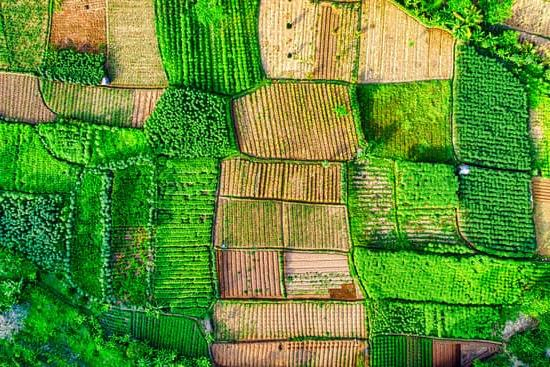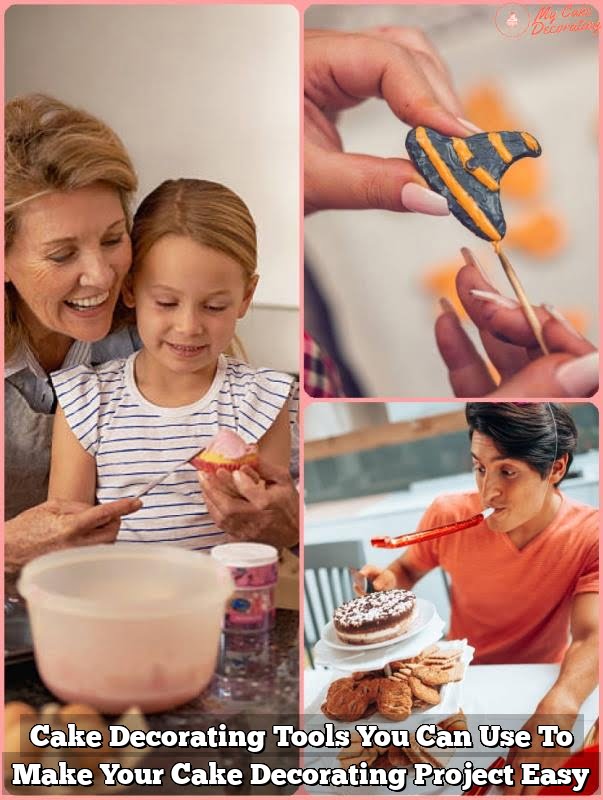Are you looking to elevate your cake decorating skills with a unique and realistic touch? Learn how to make dirt for cake decorating and take your creations to the next level. Edible dirt is a versatile and essential element in creating stunning, nature-inspired cakes that will impress your friends and family. Whether you’re aiming for a garden-themed cake or a rugged outdoor landscape, edible dirt adds depth, texture, and visual interest to your confectionary masterpiece.
The art of cake decorating has evolved over the years, and incorporating edible dirt into designs has become increasingly popular. From rustic wedding cakes to whimsical birthday creations, edible dirt can be used in a myriad of ways to enhance the overall aesthetic appeal of your dessert.
In this article, we’ll delve into the process of making edible dirt for cake decorating, exploring the specific ingredients and tools required to achieve the perfect texture and color. We’ll also provide step-by-step instructions on how to apply edible dirt to a cake effectively, as well as share creative ideas for utilizing this unique embellishment in your designs.
So, roll up your sleeves and get ready to learn how to make edible dirt that will take your cake decorating skills to new heights.
Ingredients and Tools Needed
When it comes to making edible dirt for cake decorating, having the right ingredients and tools is crucial to achieving the desired result. The following is a detailed list of what you will need to create edible dirt, as well as any special kitchen equipment that may be required.
Ingredients
The main ingredients for making edible dirt include chocolate cookies or wafers, cocoa powder, powdered sugar, and butter. The type of chocolate cookie or wafer used can vary depending on personal preference, but it should be a dark color to mimic the appearance of soil. Additionally, some decorators choose to add ground nuts or cereal crumbs for added texture and depth.
Tools and Equipment
To create edible dirt, you will need basic kitchen tools such as a food processor or blender to crush the cookies into fine crumbs. A mixing bowl and spoon will also be necessary for combining the ingredients. In some cases, a sifter may be helpful for evenly distributing the cocoa powder and powdered sugar throughout the mixture.
In addition to these tools, having a baking sheet lined with parchment paper or a silicone mat is essential for spreading out the edible dirt base while it bakes in the oven. This will ensure that it bakes evenly and can be easily broken up into realistic-looking clumps once cooled.
Overall, by gathering all of these key ingredients and tools together before beginning the process of making edible dirt, you can ensure that your cake decorating experience will go smoothly and produce impressive results.
Choosing the Right Cake for Dirt Decorating
When it comes to cake decorating with edible dirt, choosing the right type of cake is crucial to achieving the desired visual and textural effect. Not all cakes are created equal when it comes to being compatible with edible dirt, so it’s important to understand which types work best and why.
Moist and Dense Cakes
One key factor in choosing the right cake for dirt decorating is its texture. Moist and dense cakes, such as chocolate fudge cake, carrot cake, or red velvet cake, work particularly well for this purpose. Their sturdy crumb structure holds up better when applying and shaping the edible dirt, ensuring a more realistic and visually appealing finish.
Flavor Compatibility
In addition to texture, considering the flavor of the cake is important when using edible dirt as a decorative element. Chocolate-flavored cakes are often the go-to choice for pairing with edible dirt due to their rich and earthy taste, which complements the appearance of the dirt topping. However, other flavors like coffee, spice, or even certain fruit-based cakes can also work well depending on the overall theme of the cake design.
Cake Size and Shape
The size and shape of the cake should also be taken into account when choosing a suitable base for dirt decorating. Larger cakes with multiple layers provide more surface area for applying edible dirt and allow for greater creativity in design.
Similarly, a flat-topped cake or one with minimal decorations on top is ideal for creating realistic landscape or garden-themed designs using edible dirt. By considering these factors in selecting the right cake for dirt decorating, decorators can ensure that their creation not only looks visually stunning but also tastes delicious.
Making the Edible Dirt Base
When it comes to cake decorating, creating the perfect edible dirt base is essential for achieving a realistic and eye-catching design. To start, you will need to gather the necessary ingredients and tools. For the base of the edible dirt, you will need chocolate cake mix, instant chocolate pudding mix, crushed chocolate cookies, and graham crackers. Additionally, make sure to have a mixing bowl, spatula or whisk, and a baking pan on hand.
To begin the process of making the edible dirt base, follow the instructions on the chocolate cake mix package to prepare the batter. Once prepared, stir in the instant chocolate pudding mix until well combined. The addition of the pudding mix will help create a moist and crumbly texture that resembles real dirt.
Next, take your crushed chocolate cookies and graham crackers and mix them together in a separate bowl. This mixture will serve as the “dirt” component of your edible dirt base. Make sure that the pieces are finely crushed to achieve an authentic appearance.
After preparing both mixtures, layer half of the cake batter into a greased baking pan. Then sprinkle a generous layer of the cookie and cracker mixture on top. Repeat this process with the remaining cake batter and cookie/cracker mixture.
Once assembled, bake according to the cake mix package instructions. After baking, let it cool completely before crumbling up some of your “dirt”. This simple step-by-step guide will ensure that you create an irresistible edible dirt base for your next cake decorating project.
Adding Texture and Color
When it comes to creating edible dirt for cake decorating, adding texture and color is a crucial step in achieving a realistic and visually appealing result. Here are some key techniques and ingredients that can be used to enhance the appearance of your edible dirt:
- Using different types of cookies or crackers: Adding crushed cookies or crackers to your edible dirt mixture can create a varied texture that mimics real soil.
- Incorporating cocoa powder or coffee grounds: These ingredients can add depth and richness to the color of the edible dirt, as well as enhance its aroma for an even more realistic effect.
- Experimenting with food coloring: Depending on the look you want to achieve, you can use food coloring to tint your edible dirt different shades of brown and gray for a more authentic appearance.
In addition to these ideas, you can also consider using specialty ingredients such as finely ground nuts or seeds to add visual interest and dimension to your edible dirt. By using a combination of these techniques, you can create an edible dirt mixture that not only looks like real soil but also adds depth and realism to your cake decorating projects.
Ultimately, the goal when adding texture and color to edible dirt is to create a visually appealing and realistic base for your cake decorations. Whether you’re aiming for a rugged outdoor landscape or a whimsical garden-themed cake, paying attention to these details will elevate the overall look of your creation.
Applying Edible Dirt to the Cake
When it comes to applying edible dirt to a cake for decoration, there are several methods that can be used to achieve the best visual impact. The right application technique can make a significant difference in the overall appearance of the cake. Here are some methods for applying edible dirt to the cake:
1. Sprinkling: One of the simplest and most effective ways to apply edible dirt to a cake is by sprinkling it over the frosting or icing. This method works best for creating a light layer of dirt that covers the entire surface of the cake. Using a fine-mesh sieve or shaker can help achieve an even distribution of the edible dirt.
2. Pressing: For a more textured appearance, pressing the edible dirt onto the sides of the cake can create a realistic effect. Gently press handfuls of edible dirt onto the frosted or iced cake, ensuring that it adheres well to create a rough and uneven texture similar to real soil.
3. Molding: In some cases, shaping edible dirt into specific forms or shapes before applying it to the cake can add depth and dimension to the design. This method is particularly useful when creating landscape or garden-themed cakes, as it allows for greater creativity and customization.
By carefully considering which method will work best for your specific cake design, you can ensure that the application of edible dirt enhances the overall visual impact and creates a stunning finished product that impresses both visually and in taste.
Decorating Ideas
Edible dirt can be a versatile and creative addition to your cake decorating repertoire. Once you have successfully made your edible dirt base, there are endless ways to use it to transform your cake into a realistic and eye-catching masterpiece.
One popular idea is to create a garden-themed cake, complete with edible flowers, fondant vegetables, and gummy worms “crawling” through the dirt. This type of cake is perfect for spring or summer celebrations, such as birthdays or outdoor parties.
In addition to garden-themed cakes, edible dirt can also be used to construct realistic outdoor landscapes on your cakes. By strategically placing small plastic figurines of people, animals, or even buildings on top of the edible dirt, you can create charming scenes that are sure to impress your guests.
Whether it’s a serene countryside scene with grazing cows and rolling hills, or a bustling cityscape with skyscrapers and busy streets, the possibilities for using edible dirt in outdoor landscape designs are truly endless.
If you want to take your creativity even further, consider incorporating elements such as water features (made from piping gel), miniature fences (created from pretzel sticks and royal icing), or tiny terracotta pots filled with colorful icing flowers into your edible dirt designs. By thinking outside the box and experimenting with different textures and components, you can elevate your cake decorating skills to new heights with the addition of edible dirt.
Tips and Tricks for Success
In conclusion, edible dirt is a versatile and creative addition to cake decorating that can really elevate the overall design and theme of your confection. By following the tips and tricks provided, you can ensure that your edible dirt turns out realistic and visually appealing. Whether you are aiming for a garden-themed cake, an outdoor landscape, or simply want to add some texture and interest to your cake, edible dirt is a great option for achieving your desired look.
One important tip to remember when making edible dirt is to carefully choose the right cake as the base. A dense and sturdy cake, such as chocolate or carrot cake, works best for holding up the weight of the edible dirt without crumbling. Additionally, it’s essential to properly mix and bake the ingredients for the edible dirt base, ensuring that it achieves the right texture and consistency for application.
When it comes to applying the edible dirt to the cake, be sure to follow the recommended methods outlined in this article for maximum visual impact. By using specific techniques and tools, such as layering and sifting, you can create a realistic earthy appearance that adds depth and dimension to your cake design. Overall, with careful attention to detail and creativity in decorating ideas, edible dirt can truly take your cake decorating skills to the next level.
Frequently Asked Questions
How Do You Make Edible Cake Soil?
To make edible cake soil, you can start by crumbling chocolate cake into fine crumbs. Then, mix in some crushed chocolate cookies to add texture and color to the “soil.”
You can also add some cocoa powder for a richer color and flavor. Finally, you can sprinkle the edible cake soil over your cake to create a realistic dirt-like appearance.
How Do You Make Edible Sand for Cake Decorating?
Edible sand for cake decorating can be made by crushing vanilla or chocolate cookies into fine crumbs. You can then add some brown sugar to the crumbs to give them a sandy texture and color.
If you want a lighter colored sand, you can mix in some crushed graham crackers as well. Once prepared, you can use this edible sand to decorate cakes or cupcakes with a beach or desert theme.
What Food Looks Like Soil?
There are several types of food that resemble soil in appearance. For example, pumpernickel bread has a dark brown color and dense texture that is reminiscent of soil.
Similarly, black sesame seeds or crushed Oreos can also resemble dark, granular soil when used as cake decorations or toppings. Additionally, certain types of dips like black bean dip or hummus can look like soil when spread on a plate for presentation purposes.

Welcome to my blog about home and family. This blog is a place where I will share my thoughts, ideas, and experiences related to these important topics. I am a stay-at-home mom with two young children. I hope you enjoy reading it! and may find some helpful tips and ideas that will make your home and family life even better!





